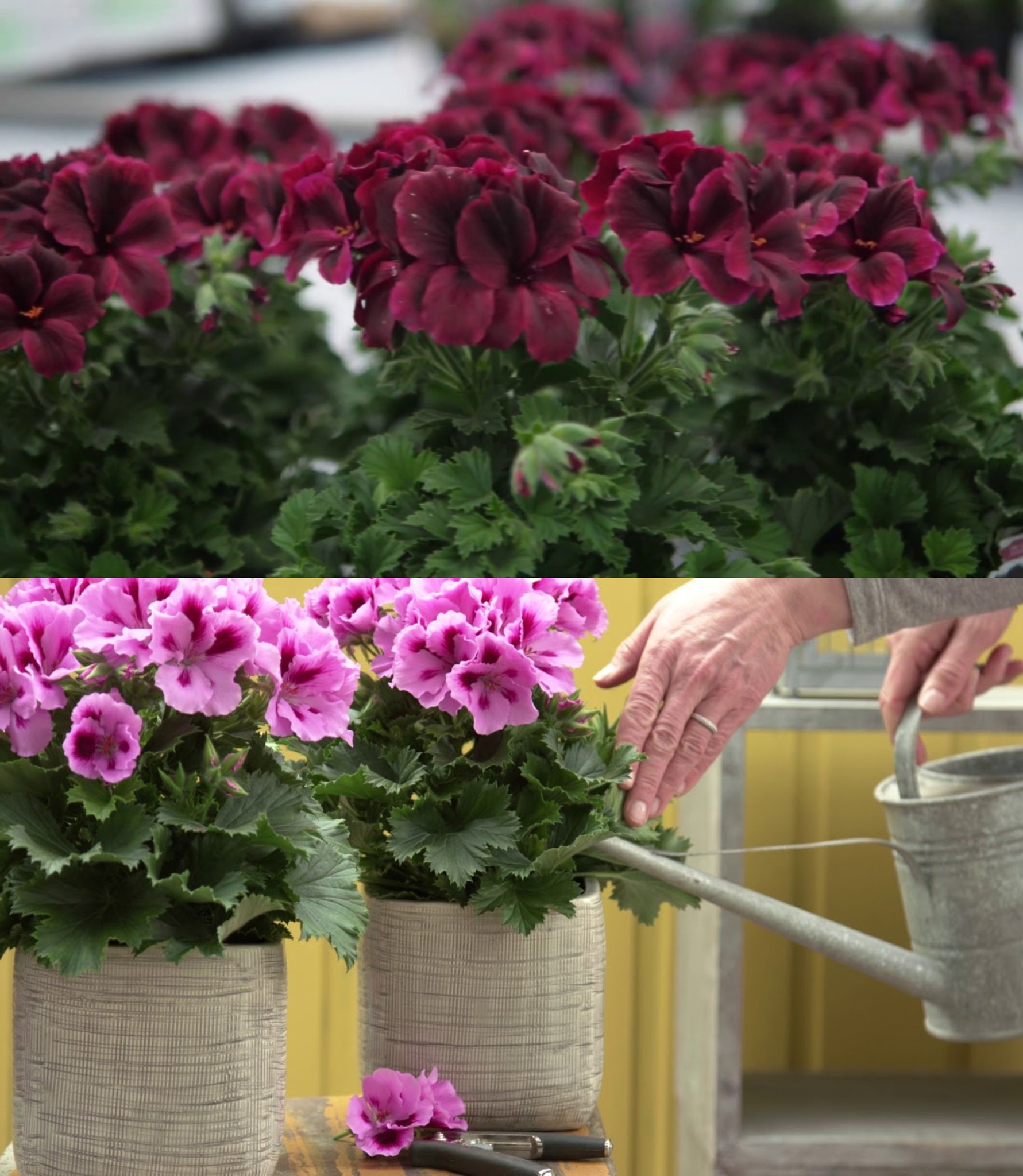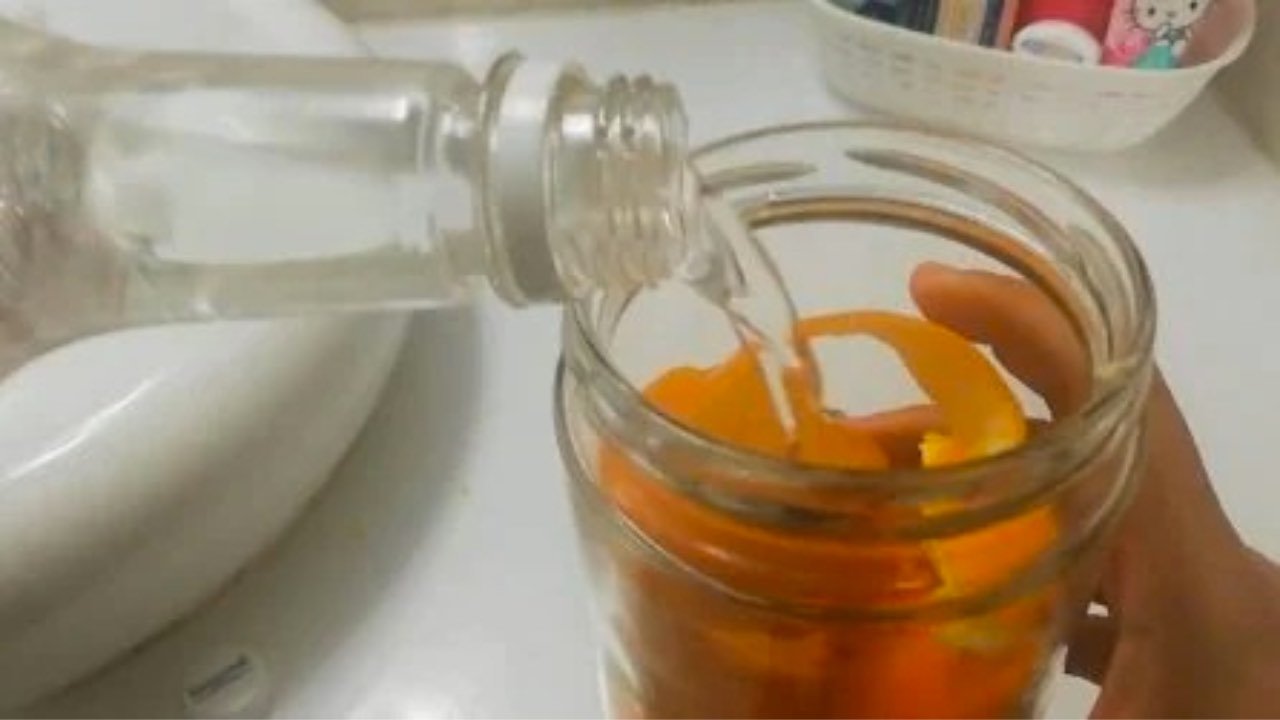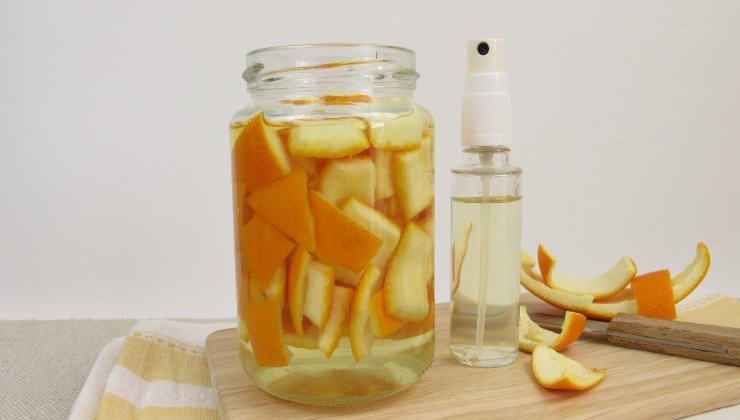
Many are unaware that orange peels, when combined with vinegar, can serve a variety of useful purposes in household chores. Let’s explore some of these applications.

As we approach the winter season, characterized by the consumption of seasonal fruits, citrus fruits, including oranges, take center stage. These fruits are particularly associated with the colder months due to their significance in boosting the immune system, especially when the onset of frost and low temperatures increases the risk of illness.
While many of us consume oranges for their vitamin C content, often in the form of fresh fruit or juice, the peels are commonly discarded without realizing their potential usefulness in our homes. Additionally, during the Christmas period, similar to mandarin peels, orange peels can be utilized for tree decoration and creative holiday crafts.
Orange peels: here’s how to use them with vinegar
Now, let’s delve into a novel use of orange peels, known to only a few homemakers, especially when paired with another unique ingredient—vinegar.

The natural solution involves taking a jar, breaking the orange peels, and pouring enough vinegar inside to ensure complete coverage of the peels. After tightly closing the jar, let it rest for approximately 15 days to allow the orange peels to macerate, releasing citrus substances and essential oils.
After this period, filter the solution, removing the orange peel pieces, and transfer the liquid into a spray bottle. This homemade solution can be applied to surfaces with stubborn dirt. The combined action of vinegar and the properties of the orange results in effective cleaning, even on steel surfaces, accompanied by a pleasantly fragrant odor.

Through maceration, the peels release essential oils that, when combined with vinegar, form a natural detergent with degreasing and disinfectant properties. This method is not exclusive to oranges; it can also be applied to other citrus fruits like lemons or mandarins, given their similar characteristics.
